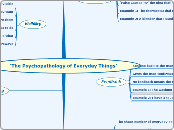a Sierra Frymire 12 éve
406
MAT 156 Frymire

a Sierra Frymire 12 éve
406

Még több ilyen


Szerző: Leyla Izaguirre


Szerző: Sophie Garza


Szerző: Andy Potts


Szerző: felipe ramirez
• Every function is a relation, but not every relation is a function
Order of Operations
Parenthesis Exponents Multiplication/ Division Addition/ Subtration
VI. Division by 0 or 1 ( bottom of pg. 154 and see School Book Page on pg. 155) • n divided by 0 is undefined (there is no answer to the equivalent multiplication problem.) • 0 divided by n = 0 • 0 divided by 0 is undefined also.
V. Relating Multiplication and Division as Inverse Operations *Division is the inverse of multiplication. *Division with a remainder of 0 and multiplication are related. *Note—is division closed, commutative, associative, and/or identity property?
Repeated subtraction model- Example: 18 divided by 6 could be shown as 18- 6 = 12 – 6 = 6 – 6 = 0 or 18 - 6 -6 -6 = 0
b. Missing-Factor Model- Using multiplication, the number of groups times the unknown variable is equal to the total. Example: 3 X c = 18 By using multiplication, we know that 3 X 6 equals 18, thus c = 6.
Set (Partition) Model- Set up a model of the total number of items in the problem then partition them into sets. Example: 18 cookies divided by 3 would be 3 sets of 6 cookies
Properities of Multiplication
A. Closure property of multiplication of whole numbers- The set of whole numbers is closed under multiplication. That is, if we multiply any two whole numbers, the result is a unique whole number. B. Commutative property of multiplication of whole numbers- For whole numbers a and b, a X b = b X a. C. Associative property of multiplication of whole numbers- For whole number a, b, and c, (a X b) X c = a X (b X c) D. Identity property of multiplication of whole numbers- There is a unique whole number 1 such that for any whole number a, a X 1 = A = 1 X a E. Zero multiplication property of whole numbers- For any whole number a, a X 0 = 0 = 0 X a F. Distributive property of multiplication over addition and subtraction- For any whole numbers a, b, and c, a(b+c)= ab + ac and a(b-c) = ab – ac Example of how distributive property works: 7 X 13 = 7 X (10 + 3) = (7 X 10) + (7 X 3) = 70 + 21 + 91
• Cartesian-Product Model Use of a tree diagram to solve multiplication problems (See pg. 146) *Be aware of how multiplication is modeled: *A X B, A(B), A B where A and B are the factors and A X B is the product
The Array and Area Model
• Repeated-Addition Model • We can use addition to put equal groups of numbers together to use multiplication. 3 + 3 + 3 + 3 = 12 (four groups of 3’s) • Can be shown by number lines and arrays. (See pg. 143) • The constant feature (+) on a calculator can help relate multiplication to addition. Example: + 3 = = = = 12
III. Equal-Addition Algorithm a. Based on the fact that the difference between two numbers does not change if we add the same amount to both numbers. Example: 255 > 255 + 7 > 262 > 262 + 30 > 292 - 163 163 + 7 -170 -(170 + 30) - 200 92
Use base-ten blocks to provide a concrete model for subtraction as we did in addition. b. The concept of remove or take away is used. c. Then paper/pencil algorithms are introduced.
Lattice Algorithm for Addition Example: 3 5 6 7 + 5 6 7 8 0/1/1/1 /8/1/3/5 9 2 4 5
c. Regroup or trade problems are then used to describe carrying.
b. After working with manipulatives, then move to paper/pencil operations.
To help students understand algorithms, we should start with manipulatives. Children can touch, move around, and be led to developing their own algorithms.
Identity- a-0=a YES However: 0-a=0 is not true.
Commutative- a-b=b-a NO
Associative (a-b)-c=a-(b-c) YES
Closure- {1,3,5,7,…} (3-5=-2) NO- Answer is not a WHOLE number
Inverse Operations
Number Line Model
Comparison Model
Missing Addend Model
Take-Away Model
Closure Property- If a and b are whole numbers, then a + b is a whole number.
Associative Property- (a+b)+c= a+(b+c)
Commutative Property- a+b=b+a
Identity Property- a+0=a
Fact Families
Counting Back
Making 10 (and then add any leftovers)
Doubles
Counting On
A X B (A cross B)
Communative
Order doesn't matter
Associative
Order is important. Also called grouping
The compliment
The whole Venn Diagram
Venn Diagram
cUs
Contained within the other set
{1,2,3,4,5,6} {2,3,4}
Must have the same number of items per set.
{a,b,c,d} {l,m,n,o}
The same numbers and amount of numbers in each set. Order does not matter
{1,2,3} {3,2,1}
There is exactly one match per set.
{1,2,3} {a,b,c}
1030five= (1*5^3) + (0*5^2) + (3*5^1) +(0*5^0)
I=1 V= 5 X=10 L=50 C=100 D=500 M=1000
If you place a smaller number before a larger number, it means to subtract it. i.e. IV= 5-1=4
Tallies- grouped in sets of 5
All have base ten
2345= 2000+300+40+5
an=a1 * r(n-1)< exponent, r= ratio
Multiplication
No fixed difference
1,1,2,3,5,8,13, 21,34,55...
Add the last two sums
an= a1+(n-1)d
Addition or subtraction
Counter example
Conjecture
4. Looking back (Check!)
Work Backwards
3. Carrying out the plan
2. Devising a plan
1. Understand the Problem
Look for patterns